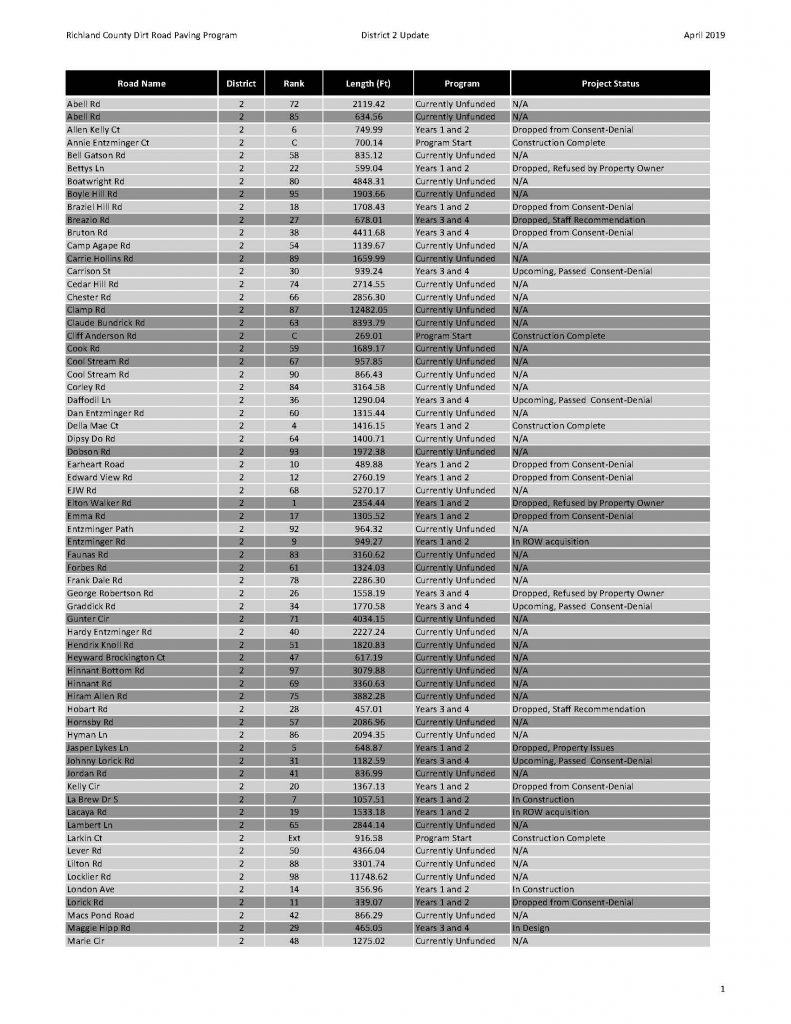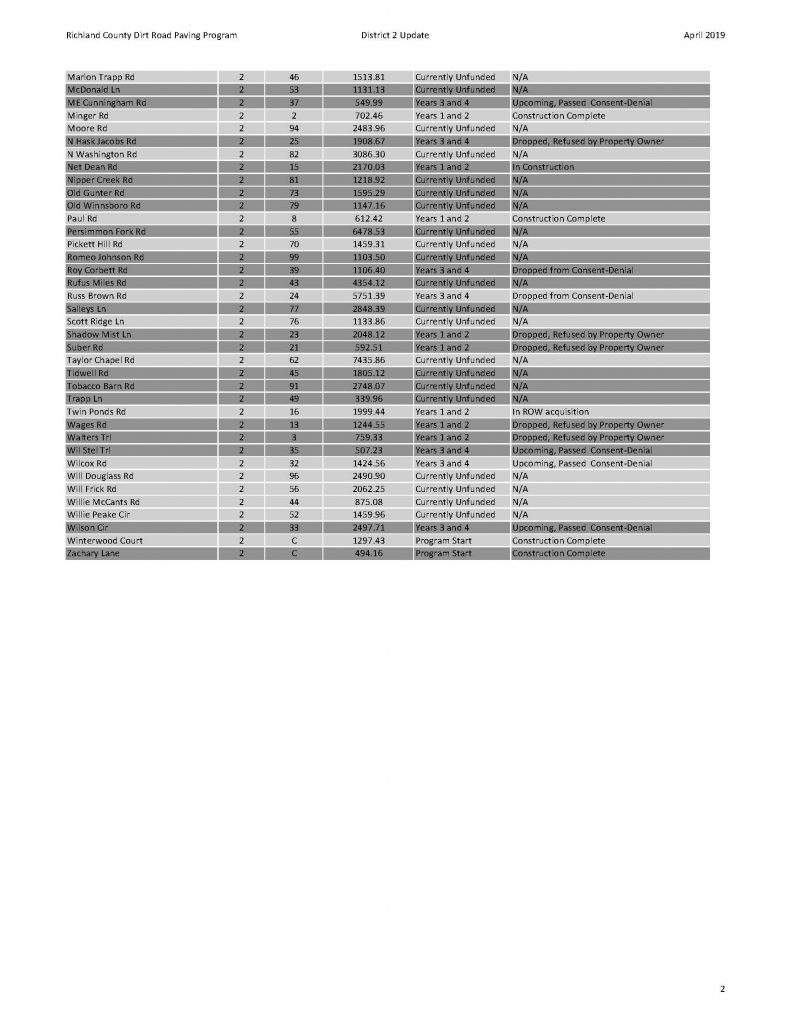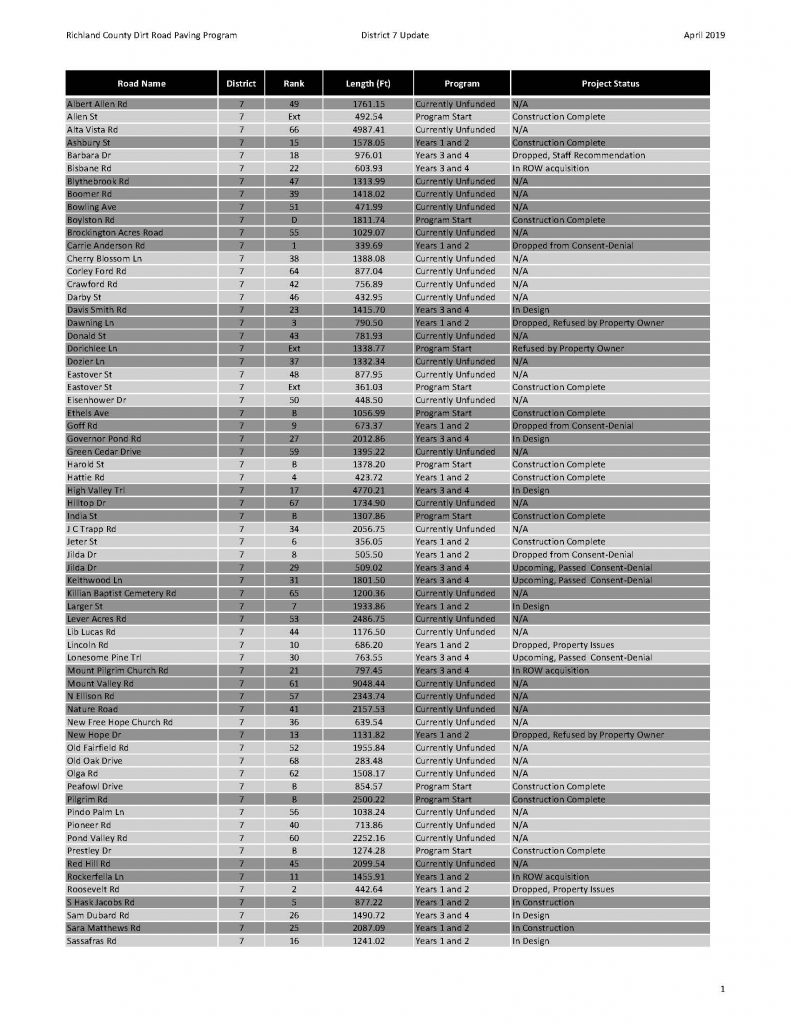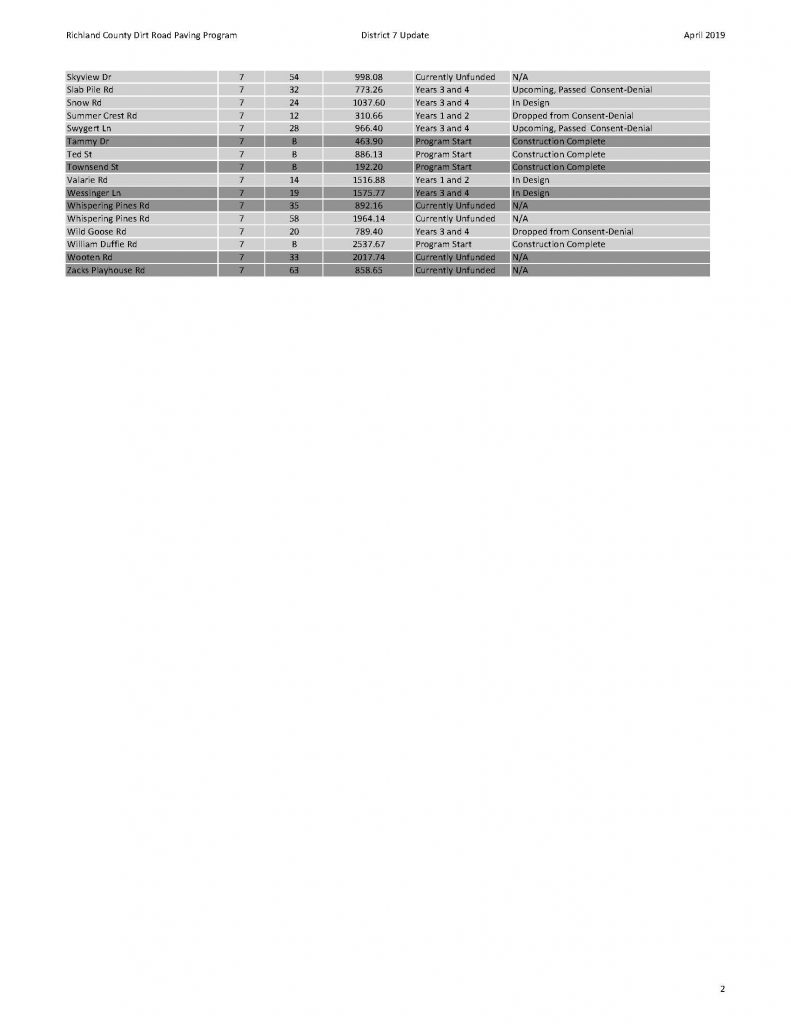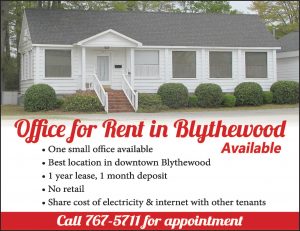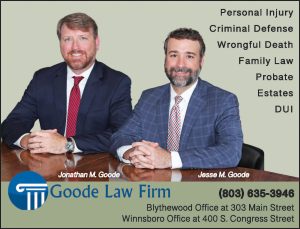COLUMBIA – For years, folks in rural Richland County who chose to live on dirt roads have continued to enjoy that lifestyle so long as 25 percent of the people who live on the road object to the road being paved, according to Chapter 21 of the County’s Dirt Road Paving Ordinance 043-14.
Last month, however, the county’s interim transportation director, Michael Maloney, asked the County’s Transportation Ad Hoc committee to recommend that County Council amend the Dirt Road Paving ordinance by removing the section in Chapter 21 that allows 25 percent of property owners on the road to decline a road paving project.
The amendment, Maloney said, would allow the County to proactively pursue and complete the paving of Richland County dirt roads. The amendment could affect more than a hundred dirt roads in Blythewood 29016.
The requested amendment to the ordinance will shift the priority to the larger number of residents who might request their dirt road to be paved rather than to the lower number of residents who might resist the paving work, according to county officials.
Kim Murphy who lives on a dirt road and frequently advocates at Richland County Council meetings rejects the county staff’s notion that the majority of people on dirt roads want their roads paved.
“I think the majority don’t want it paved. If the county feels the majority of people who live on dirt roads want their roads paved, then the county could increase the percentage from 25% to 51% instead of deleting it all together,” Murphy said. “Then, if the majority wants a road paved, those who did not would not be able to get 51% in support of not paving it. This is a power grab by the county.
The committee unanimously supported Maloney’s proposed amendment, and sent it to council with a recommendation for approval.
Committee member Don Weaver, however, questioned the county’s motivation and tactics in achieving their goal to pave the dirt roads.
“So we take out the 25 percent clause, then what kind of feedback do we get from the owners? Do we just mail out and say, ‘Hey, we’re going to pave your road in 60 days and that’s it?’ Weaver asked. “I understand lessening the requirements for y’all,” Weaver said, “but I’m concerned about the feedback from the residents.”
“If we’re going to pave the dirt road,” Maloney said, “it would be a lot like we do with the resurfacing. We put out notices of what we’re about to do. This is a capital improvement.”
Under Weaver’s questioning, Maloney conceded that the department “would be okay with leaving some of that in, like the return receipt. And it does have a time limit of 30 days,” he said, “which is good. But the last sentence, for sure, we would take out that last sentence that creates the denial [of the paving by 25 percent].”
Maloney said a dirt road is more expensive to maintain than a paved road, citing the cost of personnel and equipment, but did not include other costs associated with maintaining a paved road such as the periodic need for large amounts of materials needed to maintain paved roads.
He told the committee that he would provide a report comparing those expenses, but did not present such a report at either the first or the second reading by County Council.
“I can’t believe our council representatives are doing such an about-face. They must not know how valuable dirt roads are to the majority of residents living on them,” Murphy said. “Though I think the current 25 percent clause is best, if they really think the majority want it paved, increase the threshold to 51%, but don’t do away with it completely. Otherwise, it feels like the County wants unfettered access — for whatever reason — to pave dirt roads and take land for 50 feet of right-of-way.”
“Why would they think residents would want to trade a slow-speed country dirt road for a high-speed paved road with traffic and potholes that would facilitate the construction of dense housing subdivisions or multi-family developments?” Murphy said.
Maloney also explained that the ordinance provides for takings of the right of way by the county. He said the county would be able to take roads for paving and “may pay the property owner for the land.”
When first reading came up for Maloney’s proposed amendment to delete the 25% denial specification, Councilman Jason Branham tried to intervene prior to the vote.
“I wondered if 50% would help us get more into that principle or that realm of majority rule where, unless more than 50 percent of the homeowners object to it, then the paving should be able to proceed,” Branham suggested.
Councilman Jason Branham voted against Maloney’s proposal, but the other council members voted for it.
Branham later asked Maloney if going from 25% to 51% would facilitate more of the projects that are on hold and Maloney said it would add some, but he did not have a number.
“Once we get past first reading, we can talk about 51%, 75%, 80%…,”Council chair Overture Walker said.
Not only did Walker not bring it up at second reading, but second reading for the proposal to delete the 25% clause was passed unanimously with almost no discussion. Branham was not present.
Third and final reading on the proposed amendment is expected to be held July 18 in county council chambers, at which time the vote will be preceded by a public hearing.
